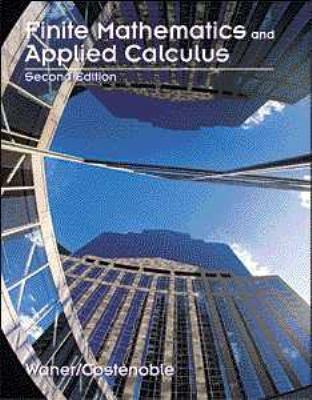Question
1 a .List 10 benefits of a food production 1 b. Suppose the model of interest is Yi = 0 + 1X1i + 2X2i +
1 a .List 10 benefits of a food production
1 b. Suppose the model of interest is Yi = 0 + 1X1i + 2X2i + ui
, where E(u|X)=0 and E(u
2
|X)=
and X1 and X2 are uncorrelated in your sample. Will the bivariate regression of Y on Xi have the
same coefficient estimate and standard error for
1
as the multivariate regression of Y on X1 and
X2?
Suppose you have annual data on Q_t, P_t, and Y_t in Cambridge for 30 years, and that you have some other
annual data available too. You are interested in estimating the coefficients of equation (1). Assume price and
quantity are simultaneously determined in a market equilibrium. Would the following variables plausibly be valid
instruments for ln(Pt)?
Table IV from Lemieux, MacLeod, and Parent (Quarterly Journal of Economics, 2009; see the
following page) shows results from a regression of log wages on a dummy for whether a job has pay
linked to performance (e.g. salespeople paid on commission) and other variables. The data are panel
data on workers. In addition to the reported coefficients, the regressions include industry, occupation,
and year dummies; county unemployment; and marital status, race dummies, and union status. Standard
errors are in parentheses.
The model also includes quadratic functions of experience (number of years in the workforce)
and tenure (number of years at this specific job). The row labeled "Experience x performancepay" is the effect of experience at 20 years interacted with performance pay. Similarly, the row
labeled "Tenure x performance pay" is the effect of tenure (evaluated at ten years) interacted
with performance pay.
1. Based on column (3), is the return to education higher at performance pay jobs or nonperformance pay jobs? What is the difference and is it statistically significant?
2. Again using column (3), what is the return to having a performance pay job for somebody with a
college degree (16 years of education), 20 years of experience, and 10 years of tenure?
5. Consider three possible ways to compute standard errors for the regressions in Table IV:
homoskedasticity-only; heteroskedasticity-robust; and clustered at the individual-job level.
Which is the most appropriate method, and why?
Step by Step Solution
There are 3 Steps involved in it
Step: 1

Get Instant Access to Expert-Tailored Solutions
See step-by-step solutions with expert insights and AI powered tools for academic success
Step: 2

Step: 3

Ace Your Homework with AI
Get the answers you need in no time with our AI-driven, step-by-step assistance
Get Started


